
By Vishnu Babu
Leaders in Energy is a nonpartisan group providing stewardship in energy and environment. Each year business panels present current work being done in this respect by DMV-area enterprises. Moderator John Gaffigan, Founder and Principal Consultant of Gaffigan Consulting, LLC and Director of Member Services and Sponsorship in Leaders in Energy, started Business Panel 1 by presenting this year’s theme: “Zero carbon goal on energy carbon water and waste.” He then introduced the
Mike House: Runs energy consulting services business at AECOM, primarily an ESCO company that does energy savings and performance contracting and deep energy retrofits. Works with utilities and federal departments such as PEPCO, Department of Energy (DOE) and Exelon.
Ryan Zwicker: From AFGlobal Corporation, works in pollution control, replacing and destroying volatile organic compounds (VOLs) and in the process generates electricity.
Bob Dululo: Works with CED Green Tech, which is the largest wholesale supplier of solar equipment in the U.S. The Company uses its purchasing power to procure equipment including solar panels and batteries from Panasonic and L.G. and assists smaller and regional installers.
Dr. Lynn Abramson: With Clean Energy Business Network (
Guiliana Kunkel: An account manager with DC Sustainable Energy Utility working primarily with DC’s energy efficiency program that helps programs provide rebates and incentives [to further efficiency goals]. The Engineers at the DCSEU provide technical assistance to different facilities and industries across the district to achieve energy efficiency.
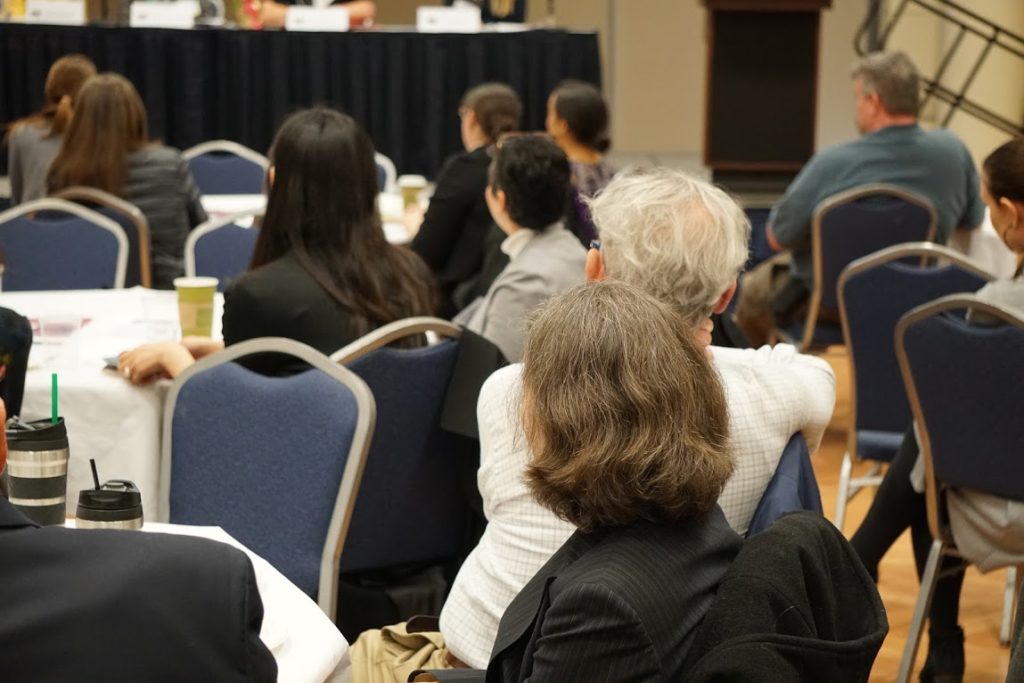
The first discussion topic was what each panellists’ companies/organisation is doing to meet the goal of energy reduction. Guiliana started off by saying that DCSEU strives for different goals each year, including:
- Gas savings goal
- Electric savings goal
- A renewable goal
- Green jobs goal for a greener economy in the District
- A certified business enterprise goal where the organization works with local businesses to improve green economy
- An unaffordable or low-income goal: 20% of the income goes to the affordable housing communities to improve energy efficiency
DCSEU also works with large energy intensive facilities such as universities, federal sites and organizations and proposes energy conservation measures and works with the team to ensure they implement solutions that are financially and operationally viable. They are striving to reduce the city’s energy usage every year and make the city more energy resilient.
Dr. Abramson said that CEBN has a network of companies that promote a low carbon economy and a sustainable energy future. These companies are specialized in Solar PV technology, advanced energy storage, energy efficiency, and water efficiency. CEBN supports them in achieving these goals by keeping them informed about state and federal policy and regulatory issues that can impact market opportunities and their technologies. CEBN also promotes the businesses’ technologies and services to the
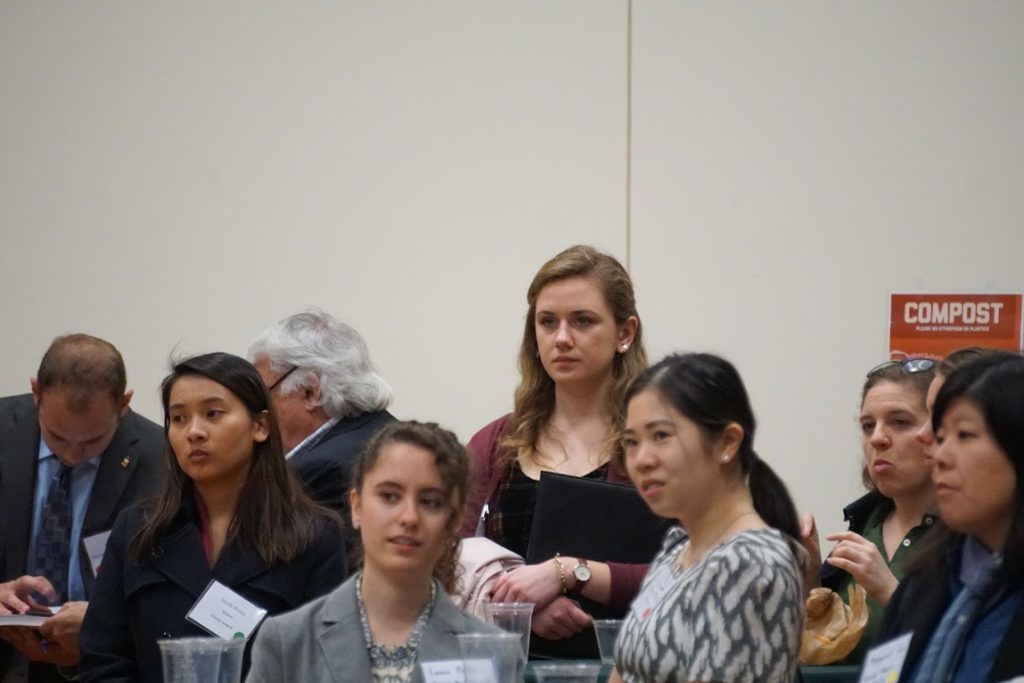
The second discussion topic was about impediments to adopting green technologies and how companies can make green technologies more appealing to FM managers and VP of operations. CFOs are attracted to the energy savings performance contracts as there may be a return on Investment through reduction in their utility cost and in the energy conservation side. Ryan said that their technology significantly replaces the huge sunk cost of the industry’s existing pollution control equipment. CED Greentech, on the operations side, reported that procurement and delivery is covered by the company and clients don’t have to negotiate with the manufacturer. With the company’s purchasing power, the PV equipment price comes down, which in turn improves the company’s ROI. Lynn explained that increased demand of green technologies is seen at the corporate at Google, Facebook, etc., as they have their own sustainable commitment. As their goals are cost-driven, they are looking for affordable technologies. Jules said that DCSEU translates policies to making their buildings more energy efficient while ensuring the tenants are comfortable with the energy conservation measures.
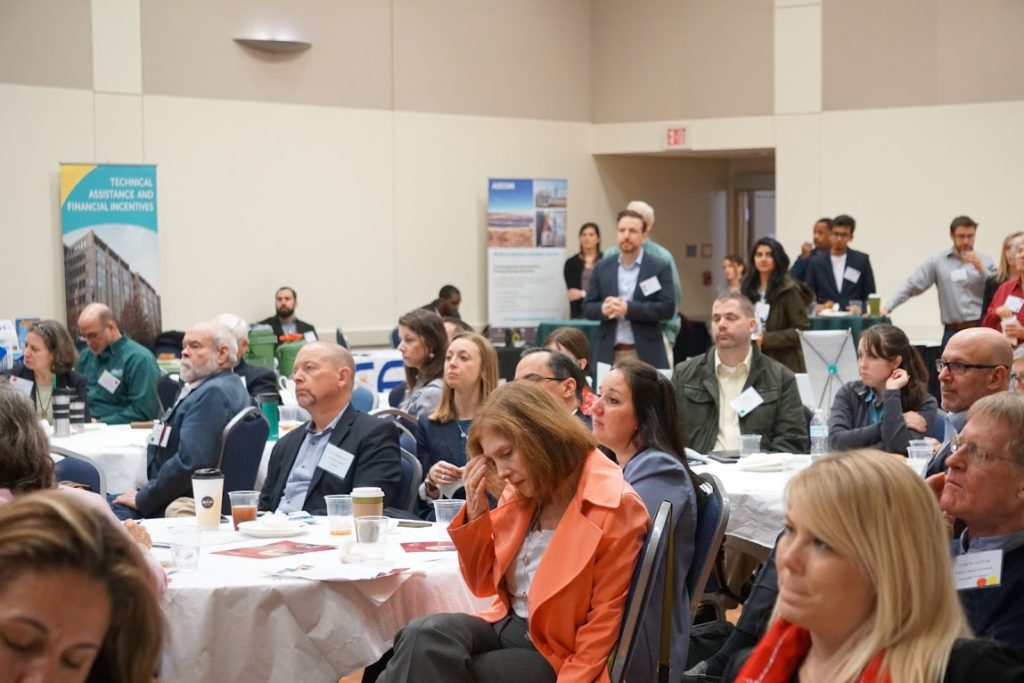
The session then proceeded to Q & A. Steffanie of the Sierra Club of Maryland asked about benchmarking in clean energy reporting in the commercial and government sectors. Gules replied that there are already benchmarking laws in DC and New York that require building 50,000 square feet and above to benchmark or face financial penalties. Stricter rules have been proposed to cover buildings over 10,000 square feet.
Peter Burke directed a two-part question to Bob: While the cost of solar panel has decreased substantially, cost for installation for homeowner is still expensive. Will costs continue to decline? Second, after there were problems with Chinese PV panels installers are using Canadian panels. Will there be any significant increase in US-made panels in the future. Bob addressed the first question by saying that the major part of the installation cost is associated with labour and there are also other soft costs such as permitting and connection fees. If you want to get the best type of installation that provides longer functioning of the PV panels, good quality installation is required, which is expensive and a major part of it will include the labour cost. Bob answered the second question by saying that it is hard for the American manufacturers to compete with the Asian market in price and quality; however, with the current policy of the federal administration, there are more opportunities for American manufacturers in the PV market.
The third question was asked by Jason O’Neil from Innovation Energy, which does building energy efficiency retrofits: Will there be rebates for EV charging stations like the LED Lighting Rebate or the Solar Rebate? Gules answered by saying that the amount of funding for sustainable energy technologies funding is higher in Maryland than in DC. Therefore, there are not any immediate rebate plans for the EV charging station in DC. Mike then commented on the PC 44 program in Maryland, which details an EV infrastructure plan: there will be around 3000 charging station developed by utilities such as Baltimore Gas and Electric and Pepco
The fourth question was about geothermal technology and its future growth. Mike answered that geothermal combined with solar can give

The fifth question was asked by John Lord: The University of Maryland talked about one of their liabilities in energy reduction is the central power plant that supplies its district heating and cooling. However, sometimes it is considered an asset rather than a liability. He directed the question to the panellists, asking if any one of them can make UMD understand how the central power plant is an asset rather than a liability. Mike answered the question by saying that the university should adopt some low carbon and no carbon technologies, which when coupled with their combined cycled power generation plant can reduce the energy demand and can achieve the best combination of resilience cost saving and emissions benefits. This concluded the first part of the business panel.
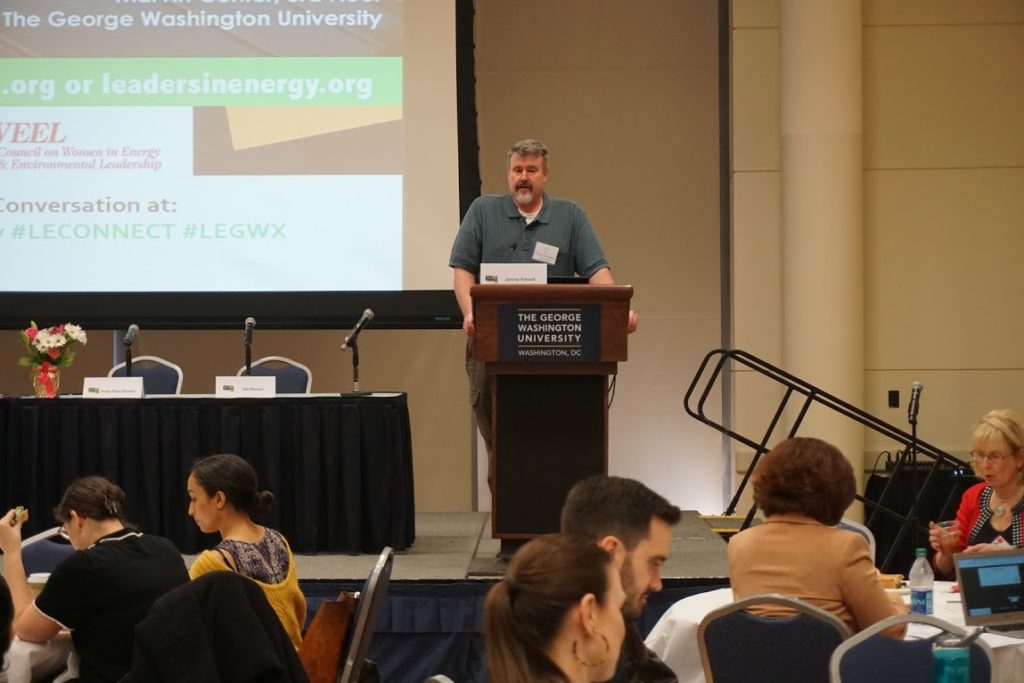
Vishnu Babu is a final year Energy Systems Engineering Masters Student at the University of Maryland. His research includes energy efficiency, renewable and sustainable energy technologies. His is currently working as a research assistant at the AHX-PI lab at the University of Maryland, College Park which focuses on ASHRAE Level 1, 2 and 3 energy audit of high energy-consuming buildings at the UMD campus.


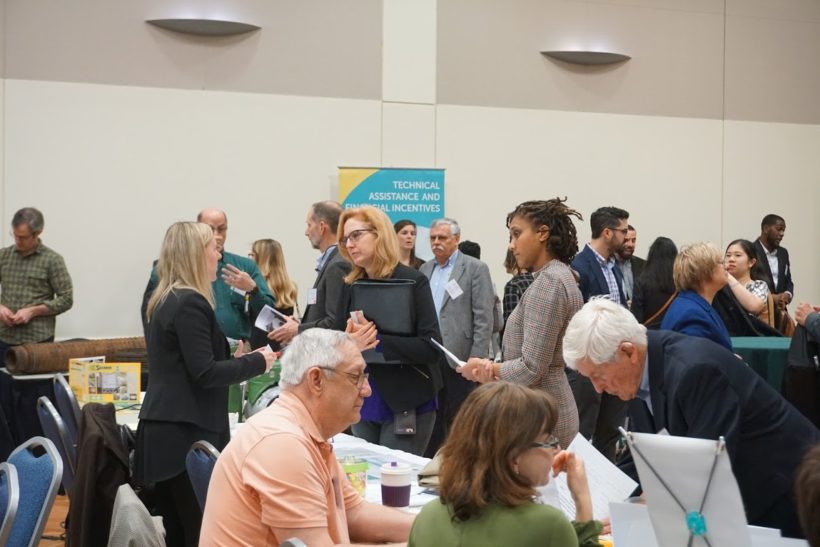
Leave a Reply